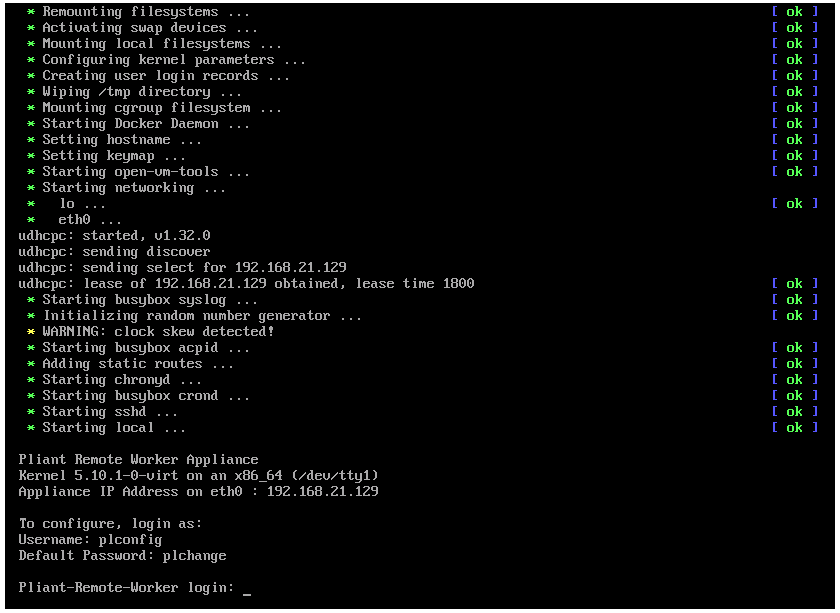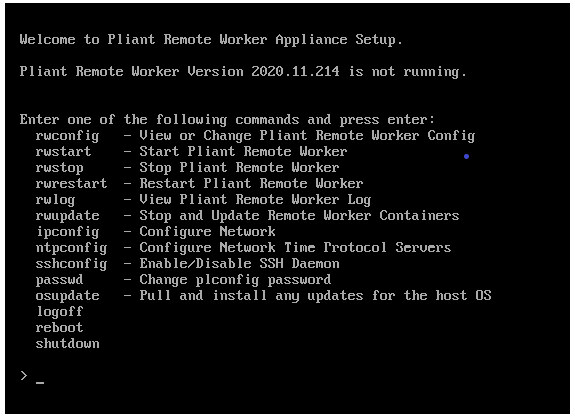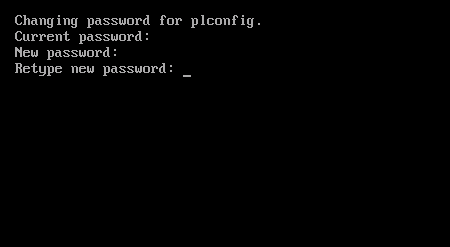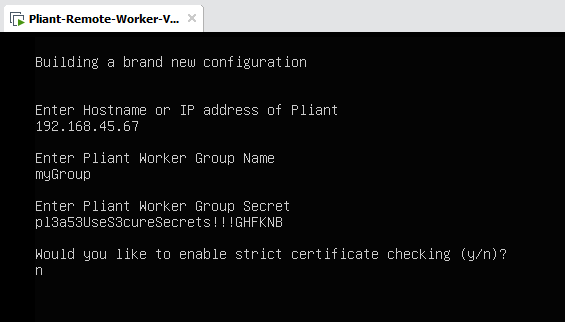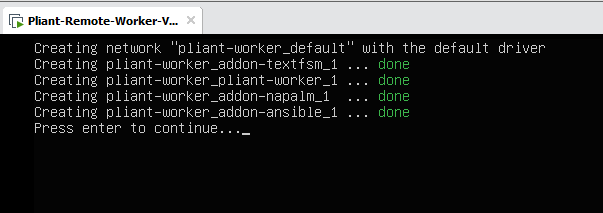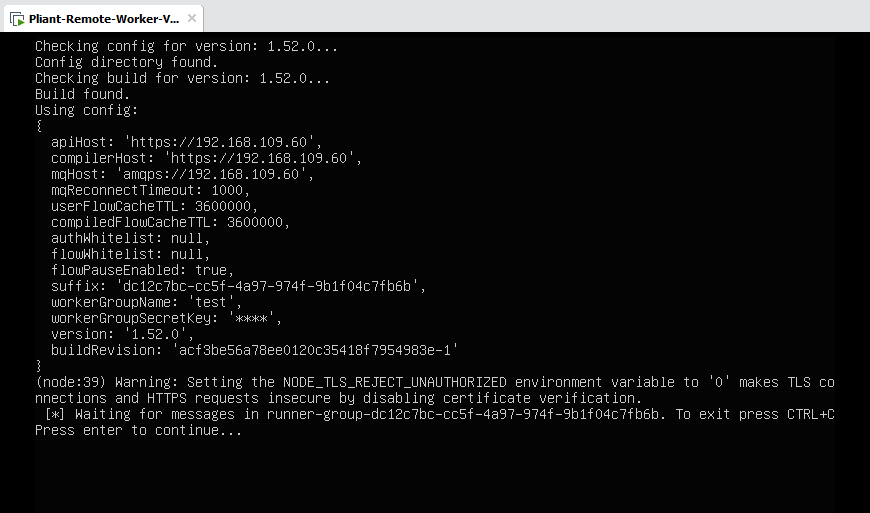Set Up Pliant Remote Worker Appliance
The purpose of this document is to provide step by step instructions for configuring a Pliant Remote Worker instance.
The Pliant Remote Worker Appliance is a Linux appliance with the Pliant Remote Worker container and auxiliary containers preinstalled. It enables a user to deploy a Pliant Remote worker without requiring any experience with Docker.
Preparation for Remote Worker Installation
A user account on the VM host capable of deploying an OVA
A remote worker group configured on your Pliant instance (See: Remote Worker Groups )
Network connectivity from the Pliant Remote Worker to the Pliant instance on the following TCP ports:
443 / HTTPS: Pliant proxy
5671 / AMPQS: Pliant message queue (No longer required after Pliant version 2021.9)
Getting The Remote Worker OVA
Use the download link in the Pliant Support Portal article to download the OVA file.
Deploy the OVA to a VM hypervisor and continue with the configuration steps.
Remote Worker Configuration Steps
1. Open the Remote Worker Appliance Console via either the VM host’s remote console or an SSH connection.
2. Log in to the Appliance as the user “plconfig” with the password “plchange”
3. Change the password for the Remote Worker Appliance using the “passwd” command. (Note: Text you enter will not appear on the screen)
4. The appliance will use DHCP by default. If static IP configuration is needed, use the “ipconfig” command to run the IP configuration utility.
5. Update the Remote Worker to the latest container versions using the “rwupdate” command. It may show an error message if there is no existing worker-config.env file to back up.
6. Configure the remote worker parameters for your environment using the “rwconfig” command. If you are using a self-signed certificate on your Pliant instance, you will not want to enable strict certificate checking.
7. Start the Remote Worker using the “rwstart” command.
8. Check the Remote Worker status using the “rwlog” command. You should see messages like those shown below. If there is no output, re-check the settings and do a “rwrestart”, then try “rwlog” again.
